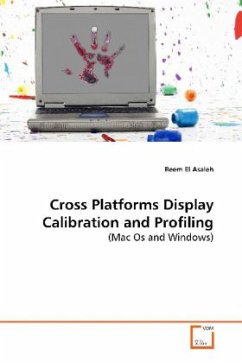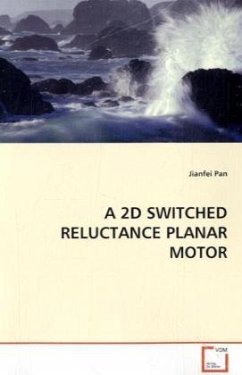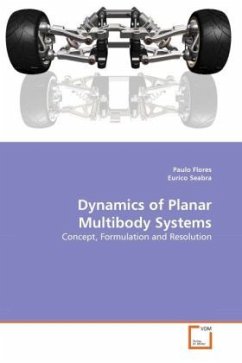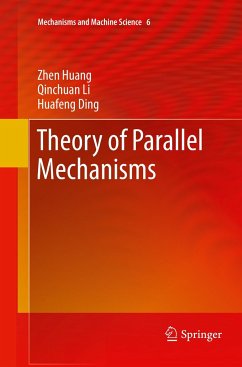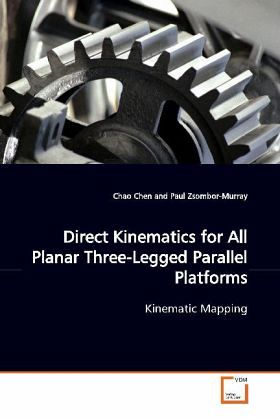
Direct Kinematics for All Planar Three-Legged Parallel Platforms
Kinematic Mapping
Versandkostenfrei!
Versandfertig in 6-10 Tagen
32,99 €
inkl. MwSt.

PAYBACK Punkte
16 °P sammeln!
Kinematic mapping is a valuable tool to deal with difficult direct kinematics problems. It should have successful application in other areas of kinematics as well. However, it has been ignored by most engineers. One reason may be that it is rooted in 19th century projective geometry, while most engineers are familiar only with the older, traditional Euclidean geometry. Hence, manyreject kinematic mapping at the first glance when confronted by its peculiar, sometimes intuitively unrealistic, possibly confusing and overly complicated concepts. It is humbly suggestedthat we might initially avoid ...
Kinematic mapping is a valuable tool to deal with
difficult direct kinematics problems. It should have
successful application in other areas of kinematics
as well. However, it has been ignored by most
engineers. One reason may be that it is rooted in
19th century projective geometry, while most
engineers are familiar only with the older,
traditional Euclidean geometry. Hence, many
reject kinematic mapping at the first glance when
confronted by its peculiar, sometimes intuitively
unrealistic, possibly confusing and overly
complicated concepts. It is humbly suggested
that we might initially avoid the details of the
basic geometry in order not to scare off potential
users when introducing them to kinematic mapping.
The authors found this tool to be easy to use
but difficult to understand. Therefore, it may
obtain wider acceptance if we focus first on actual
applications before becoming enmeshed deeply in the
theoretical background.
difficult direct kinematics problems. It should have
successful application in other areas of kinematics
as well. However, it has been ignored by most
engineers. One reason may be that it is rooted in
19th century projective geometry, while most
engineers are familiar only with the older,
traditional Euclidean geometry. Hence, many
reject kinematic mapping at the first glance when
confronted by its peculiar, sometimes intuitively
unrealistic, possibly confusing and overly
complicated concepts. It is humbly suggested
that we might initially avoid the details of the
basic geometry in order not to scare off potential
users when introducing them to kinematic mapping.
The authors found this tool to be easy to use
but difficult to understand. Therefore, it may
obtain wider acceptance if we focus first on actual
applications before becoming enmeshed deeply in the
theoretical background.




